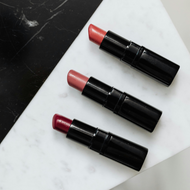From Lipstick to Laundry - Identifying EDCs in everyday essentials
Posted by Miriam on Wed Jul 2025
We all know the importance of looking after our bodies with healthy foods, sunlight and movement, but do you ever think about what you use on your body?
Problem #1: In the era of mass production of products, it’s brought unprecedented choice and convenience, but not without its downsides.
Problem #2: Many everyday products around us may be disrupting the endocrine system and impacting metabolism, growth, reproduction, and even mood.
Understanding where these EDCs are most prevalent is an important first step in minimising exposure and protecting your overall health.
What Are EDCs?
EDCs are synthetic or naturally occurring chemicals that can mimic, block, or interfere with hormones in the body. They can disrupt the endocrine system, which regulates critical functions such as metabolism, growth, reproduction, and mood. Common sources of EDCs include plastics, pesticides, personal care products, period care and even certain foods. Understanding where these chemicals lurk in everyday products is the first step toward minimising exposure and protecting your health.

EDCs in Personal Care Products
Personal care products are a significant source of EDCs, as many personal care products contain chemicals that can disrupt hormonal balance. Some of the most common are:
Parabens
Parabens are widely used as preservatives in cosmetics, lotions and menstrual products to prevent the growth of bacteria and mould. However, they can mimic estrogen in the body, potentially leading to hormonal imbalances. Endocrine disruptors interfere with the normal functioning of the hormonal system and can contribute to an array of negative health impacts. Researchers from one of the studies estimated that exposure to EDCs from menstrual products is at least 10 times higher than the estimated absorption rates through skin elsewhere on the body. Researchers from one study estimate that exposure to parabens in menstrual products is at least 10 times higher than the estimated absorption rates through skin elsewhere on the body. Look for labels that specify "paraben-free" to reduce exposure.
Phthalates
Often used to make fragrances last longer, phthalates can also be found in nail polishes and hair sprays. These chemicals are known to disrupt hormone function and have been linked to reproductive issues. To avoid phthalates, choose products labelled as "phthalate-free" or opt for unscented options.
Formaldehyde and Formaldehyde-Releasing Agents
Formaldehyde is a known carcinogen and can also disrupt hormones. It’s often found in hair straightening products and some nail treatments. Look for products that explicitly state they do not contain formaldehyde or its derivatives.
Sunscreen Ingredients
Certain chemical sunscreens, such as oxybenzone, have been shown to disrupt endocrine function. While protecting your skin from UV rays is essential, consider mineral-based sunscreens that use zinc oxide or titanium dioxide, which are less likely to cause hormonal issues.
Fragrance
The term "fragrance" on a product label can encompass a wide range of undisclosed chemicals, many of which can act as EDCs. Choosing fragrance-free or naturally scented products can help reduce your exposure.
EDCs in Food
Food can also be a source of EDCs, often due to packaging materials, agricultural practices, and food processing methods. Here are some areas of concern:

Pesticides
Many pesticides used in conventional farming are known EDCs. Foods that are not organic may contain residues of these harmful chemicals. Purchasing organic produce or washing non-organic fruits and vegetables thoroughly can help reduce exposure.
Bisphenol A (BPA)
BPA is commonly found in plastic food containers and the lining of canned goods. This chemical can mimic estrogen and has been linked to various health issues. Opt for BPA-free products, and consider using glass or stainless steel containers for food storage.
Artificial Additives
Many processed foods contain artificial additives, some of which may have endocrine-disrupting effects. Familiarise yourself with common additives, such as artificial colours and flavours, and aim for whole, unprocessed foods whenever possible.
Hormones in Animal Products
Some livestock are treated with hormones to promote growth, and these hormones can remain in the meat and dairy products. Opting for hormone-free or organic meat and dairy to help limit exposure to these substances.
Reducing Your Exposure to EDCs
While it may seem daunting, reducing your exposure to EDCs is entirely achievable. Here are some practical steps you can take:
- Read Labels: Become familiar with product labels and ingredient lists. Avoid products containing known EDCs.
- Choose Natural Products: Whenever possible, opt for natural or organic cosmetics, cleaning supplies, and food items. Many brands prioritise safety and transparency in their ingredient sourcing.
- Switch period products: replace disposable pads/ tampons with menstrual cups or discs made of medical-grade silicone that do not contain added EDCs.Check out some easy to use, toxin free menstrual cups here ➡️ https://maisycup.com.au/categories
- Go DIY: Consider making DIY cleaning supplies using simple ingredients like vinegar, baking soda, and essential oils. This way, you can control what goes into your products.
- Limit Plastics: Reduce your use of plastic containers, especially for food storage. Choose glass, stainless steel, or silicone alternatives.
- Wash Your Produce: Thoroughly wash fruits and vegetables to remove pesticide residues, or better yet, choose organic options when available.
Identifying endocrine-disrupting chemicals in everyday products is crucial for safeguarding your health. By understanding where these chemicals are commonly found in cosmetics, cleaning supplies, and food, you can take proactive steps to minimise your exposure. Empowering yourself with knowledge allows you to make informed choices that promote better health for you and the environment. Remember, every small change counts toward a healthier lifestyle!

